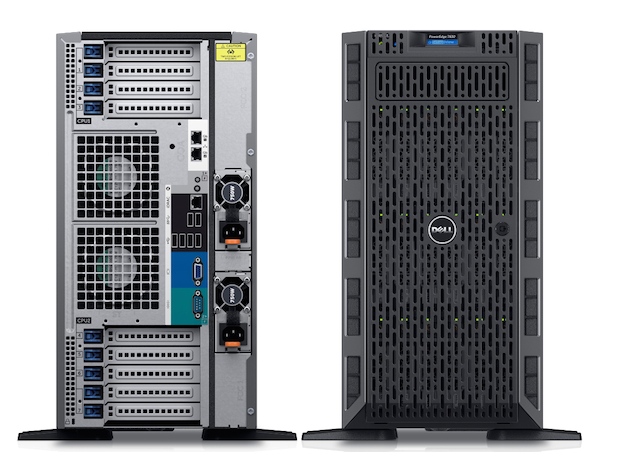'ZDNET Recommends': What exactly does it mean?
ZDNET's recommendations are based on many hours of testing, research, and comparison shopping. We gather data from the best available sources, including vendor and retailer listings as well as other relevant and independent reviews sites. And we pore over customer reviews to find out what matters to real people who already own and use the products and services we’re assessing.
When you click through from our site to a retailer and buy a product or service, we may earn affiliate commissions. This helps support our work, but does not affect what we cover or how, and it does not affect the price you pay. Neither ZDNET nor the author are compensated for these independent reviews. Indeed, we follow strict guidelines that ensure our editorial content is never influenced by advertisers.
ZDNET's editorial team writes on behalf of you, our reader. Our goal is to deliver the most accurate information and the most knowledgeable advice possible in order to help you make smarter buying decisions on tech gear and a wide array of products and services. Our editors thoroughly review and fact-check every article to ensure that our content meets the highest standards. If we have made an error or published misleading information, we will correct or clarify the article. If you see inaccuracies in our content, please report the mistake via this form.
Dell PowerEdge T630 review: A tower of updated server power


Dell PowerEdge T630
pros and cons
- Dual sockets for latest Xeon E5-2600 v3 processors
- Up to 768GB of DDR-4 RAM
- Maximum 32 internal drive bays
- Choice of several RAID options
- Optional PCI-e SSDs and GPU cards
- Integrated iDRAC management
- Storage options require careful planning
- High-end options carry a high price tag
- Separate server and storage may be more flexible
- Editors' review
- Specs
In recent years we've grown used to servers coming in slim rack-mount casings, but there's still a market for free-standing tower configurations, particularly in the small to medium-sized business space. This is exactly the market addressed by Dell's PowerEdge T630, which offers dual Xeon E5-2600 v3 (Haswell) processors that deliver massive multi-core capabilities, supported by up to 768GB of DDR-4 memory. The T630 also offers bucket-loads of storage space and all the usual management and high availability features for which the PowerEdge brand is renowned.
More for less
Built to the usual Dell standards, the PowerEdge T630 is effectively an upgrade to the T620 model. That means the same floor-standing chassis as before which, contrary to what you might imagine from the photos on Dell's website, is remarkably compact -- especially when you consider what it can hold. Imagine an upright 5U server (rails are available for rack-mounting as an option if preferred).
Redundant power comes as standard, the review system shipping with 750W hot-swap power supplies, although lower- and higher-rated supplies (up to 1600W) are available to suit the configuration ordered. An 1110W DC power supply is yet another option. Moreover, one of the features of both the new Xeon E5-2600 v3 processors and DDR-4 RAM is the ability to deliver a deal more computing muscle for a lot less energy: in our tests, the PowerEdge T620 never consumed more than 400W no matter how hard we pushed it.
One downside of this type of server is the need to decide on the type and eventual number of disks you might need when ordering, as switching configuration later is far from easy. Our review unit was kitted out to take the maximum number of 32 2.5-inch disks, although only half the bays were filled -- in our case with sixteen 300GB 10K SAS disks.
For those with more modest requirements, a 16-bay chassis is available; if you prefer 3.5-inch drives, the options are 8-bay and 16- bay setups. Prices, naturally, reflect the number of bays you go for. If you only reserve half the available area for disks, the other half can be fitted with a 'flex bay' that can take up to four PCI-e SSDs (assuming you can afford them) or yet more disks, including ordinary SSDs, just to make it even more complicated.
Top ZDNET Reviews
Although it's more power efficient than its predecessor, the T630 still needs cooling. As well as fans built into the power supplies, there are two more plug-in fans at the back of the chassis that, courtesy of a big plastic baffle, draw air over both the very large processor heatsinks and memory modules. If you want fan redundancy, however, you again have to specify that when ordering, in which case you'll be sent a 4-fan unit that slides in just behind the storage.
We found the fans to be relatively quiet most of the time, but you wouldn't want to sit next to or near the server and it would be best sited in a separate room of its own.
Choices, choices
Just about everything inside the T630 is customisable starting, inevitably, with the processors. You can, if you want, start out with just one and maybe add another later, but most customers will fill both sockets straight away. And there's a huge choice here, from the 1.6GHz E5-2603 v3 with 6 cores/6 threads all the way up to the 2.3GHz E5-2699 v3 with 18 cores/36 threads per processor. Just be aware of the equally huge range in prices, with the latter chip costing just over £4,200 (ex. VAT) more than the cheapest available.
That said, most customers will be looking to future-proof their investment and will understand the price differentials that apply. Added to which Dell expects most to opt for something in-between like the 2.3GHz E5-2695 v3 processors fitted on the review machine. These have 14 cores and 28 threads offering up masses of processing power for a lot less than the top of the range Xeons. They do, however, still account for around a third of the overall cost of the server.
Your choice of processor also affects the supported memory speed. The latest DDR-4 RAM with the ECC protection considered essential for server use is standard across the board, but you can only use the maximum access speed of 2,133MHz when you have higher-rated processors like the E5-2695 v3 installed in our review system.
DDR-4 memory can also add significantly to the price. Our review system's 64GB used up just eight of the 24 DIMM slots, which is a reasonable starting point. When we checked, additional modules from Dell were priced at £14-26 per GB depending on DIMM capacity. So, for example, an additional 64GB would add £512 (ex. VAT) to the price. That said, we would always recommend over-specifying on the memory front as it doesn't hurt and adding more later can be disruptive.
Storage and other options
When it comes to the storage you can opt for SATA or SAS hard disks, or SSDs and, if you're on a budget, make use of the on-board PERC S130 controller to manage a RAID 0/1/5 array with up to eight hot-swap disks. Our review system came with an optional plug-in RAID card (a PowerEdge H730P priced at just over £400 ex. VAT) which, based on an LSI SAS 3108 PowerPC processor, provides more extensive hardware-based RAID capabilities along with 2GB of non-volatile cache and support for 12Gbps SATA and SAS drives.
Solid-state drives can similarly be plugged into the PERC adapter to really boost storage performance. These do still carry a hefty price tag, so for those after a more cost-effective solution the H730P also supports LSI CacheCade technology which, as the name suggests, can improve hard disk performance using just a handful of SSDs as a high-speed cache.
Other options include a dual redundant SD card module, which is typically used for automatically booting the server into a hypervisor. Plus, of course, you get Dell's latest iDRAC management controller on the motherboard which now features a Gigabit port for out-of-band remote management. This can be accessed from a web browser to both monitor and manage the server from afar or, using Dell's OpenManage Essentials, incorporated into a much wider SNMP management system.
Finally, if you need even more compute power than the latest v3 Xeons can deliver, you can always plug in a couple of GPU cards. Hoewver, you'll need specialist software to take advantage of this option and a lot of spare cash to buy into it.
Potential buyers
It's clearly possible to stuff the PowerEdge T630 with a great deal of compute power, memory and storage to create an extremely capable server that can handle everything from email, web and database hosting to server consolidation, VDI and big data analytics. Although the top-end options carry high price tags, the T630 can be affordable and is the kind of all-in-one solution preferred by a lot of SMEs. The question is whether the tower format is better than, say, a low-profile rack server plus a slightly more flexible external storage array. Larger organisations and those with the necessary rack space may prefer the latter -- but then, the T630 can always be rack mounted, so the choice is yours.